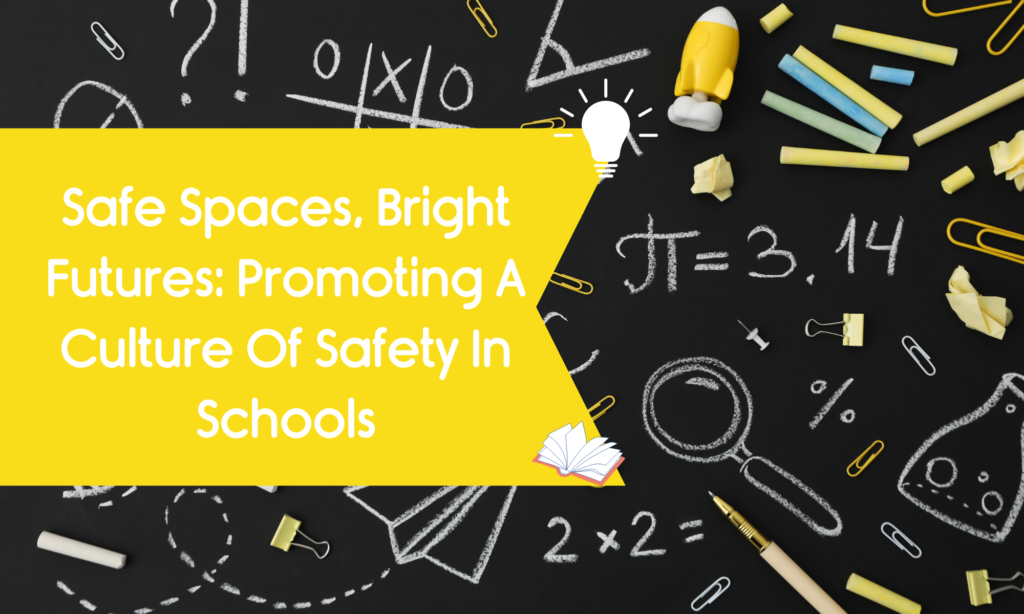Safe Spaces, Bright Futures: Promoting A Culture Of Safety In Schools

Have you ever wondered what goes into ensuring the safety and security of students and staff in our schools? With the increase in unfortunate incidents, it has become more important than ever for education professionals to be proactive in implementing best practices and effective strategies. How can schools create an environment that not only protects but also promotes learning and well-being? In this article, we’ll explore valuable insights and best practices that can help enhance safety and security in school, making them safer and more nurturing places for everyone.
Let’s delve into some of the points below.
Implementing Effective Safety Protocols and Procedures
Education professionals must take proactive steps to implement effective safety protocols and procedures in schools. Conducting regular risk assessments can help identify potential vulnerabilities and areas for improvement. Involving students, staff, and parents in this process ensures that all perspectives are considered and that everyone feels empowered in their safety efforts.
Establishing clear and concise emergency response plans, along with regular training and drills, can help familiarize individuals with these plans and ensure a coordinated response during emergencies. Investing in modern security technologies, such as access control systems and surveillance cameras, can also enhance security and monitor visitor movement.
Training Staff and Students on Safety Measures
In addition to safety protocols and technology investments, education professionals must prioritize training staff and students for effective emergency response. Training should cover active shooter drills, evacuation procedures, and first aid. Regular updates and thorough safety orientation for new employees are essential. Involving students in identifying suspicious activities and promoting safety awareness creates an empowered community. Implementing regular drills reinforces acquired skills, ensuring ongoing effectiveness.
By fostering a culture of safety through training, schools prioritize the well-being of their community members.
Building Partnerships with Local Law Enforcement Agencies
To enhance safety in schools, education professionals should establish strong partnerships with local law enforcement. Regular communication and meetings facilitate the exchange of safety protocols and best practices. Collaborating ensures alignment with current standards and regulations.
Law enforcement offers crucial training on crisis intervention and active shooter response, enhancing preparedness. In emergencies, this partnership expedites law enforcement response, coordinating drills, and safety assessments, and providing additional personnel. Building these partnerships proactively prioritizes safety, conveying a clear message to the school community about their well-being.
Utilizing Technology to Enhance Safety and Security
In the digital age, schools can boost safety using technology, even during extracurricular activities for kids with implementing security cameras and integrating them with access control systems that deter threats and manage visitor access during these activities. Reliable notification systems ensure quick communication during emergencies through mass messages or calls, even in these contexts. Visitor management systems screen and track visitors, enhancing security during these activities.
Investing in robust cybersecurity protects sensitive information and prevents unauthorized access, especially during these engaging activities. Combining technology with best practices, like partnering with law enforcement, forms a comprehensive approach to school safety, providing peace of mind for all involved in these activities.
Communicating with Parents and the Community
Establishing open communication with parents is crucial for school safety. Regular newsletters or email updates can inform parents about safety protocols, drills, and policy changes. Providing contact information encourages questions and concerns. Conducting safety workshops or meetings with parents addresses their concerns and garners feedback, fostering collaboration.
Maintaining strong ties with the local community through engagement with law enforcement, community organizations, and businesses enhances collective efforts in ensuring school safety.
Evaluating and Improving Safety Practices
Regularly reviewing safety measures is crucial , especially during extracurricular and cultural activities in school. Through safety audits, surveys, and feedback from staff, students, and parents, potential gaps or areas for improvement can be identified, particularly in these contexts. Following the evaluation, an action plan should be developed, addressing weaknesses by updating procedures, investing in technology, or providing additional training relevant to these activities. Conducting regular drills ensures everyone is familiar with emergency protocols, allowing for effective crisis response and identifying areas needing improvement, particularly during these activities.
Staying updated on the latest safety practices through conferences, expert guidance, and networking helps schools incorporate new strategies and technologies for enhanced security, even during these engaging activities.
In conclusion, enhancing safety and security in school is a critical responsibility for education professionals. By evaluating and improving safety practices, schools can create a secure environment for students and staff. Regular assessments and feedback from stakeholders help identify gaps and areas for improvement. This information is then used to develop an action plan, which may involve updating security procedures, investing in surveillance technology, or providing additional training. Conducting drills and simulations ensures everyone is familiar with emergency protocols and highlights areas that require further attention. Staying up to date with the latest safety practices through attending conferences, seeking expert guidance, and networking with peers allows schools to incorporate new strategies and technologies. By continually evaluating and improving safety practices, education professionals demonstrate their commitment to keeping students and staff safe.

